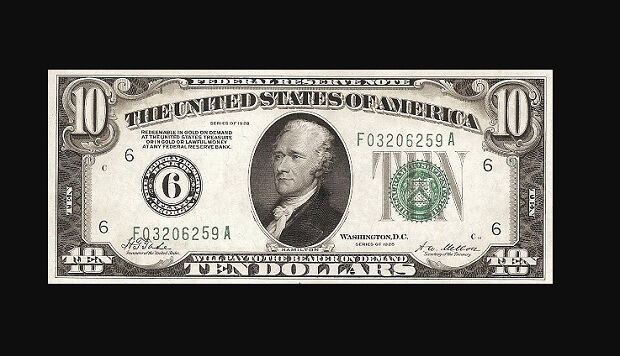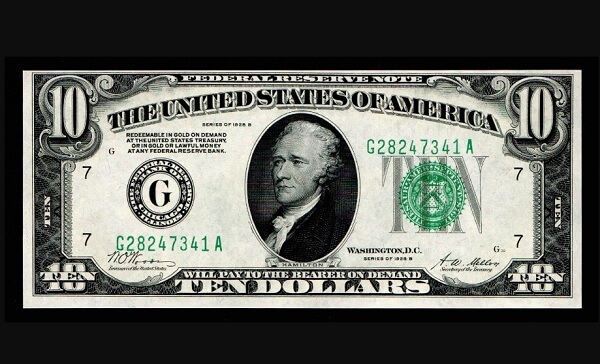1928 10 Dollar Value – Attention all antique money collectors, we have exciting news for you! If you’re a fan of collecting rare and historical currency, then the 1928 10 dollar bill is a must-have addition to your collection. This particular bill holds significant value and has an interesting history behind it.
In this guide, we will dive into everything you need to know about the 1928 10 dollar bill, including its value and unique features that make it a coveted item among collectors.
So, fellow collectors, sit back and get ready to learn all about the fascinating world of the 1928 10 dollar bill.
The 1928 ten dollar bills can be quite valuable, depending on the series. One interesting aspect to note is the existence of star notes, which are replacement bills printed by the United States Federal Reserve.
So, what makes the 1928 10 dollar bill so special?

The Rich History of the 1928 Ten Dollar Bill
We will unveil the rich history of the 1928 ten dollar bill, shedding light on its origins and significance. This old and intriguing piece of currency carries a story that captivates collectors and history enthusiasts alike.
The 1928 ten dollar bill was part of the series issued by the United States Federal Reserve during a time of economic uncertainty and transformation. It represents a pivotal moment in American history, as the nation grappled with the effects of the Great Depression.
This bill provides a glimpse into the economic landscape of the time, as well as the government’s efforts to stabilize the financial system.
Furthermore, collectors may come across misprinted or counterfeit versions of the 1928 ten dollar bill, adding an element of intrigue to its history.
These fake or altered bills serve as reminders of the constant battle between counterfeiters and the government’s attempts to maintain the integrity of its currency.
1928 10 Dollar Bill Specifications
The 1928 10 dollar bill is a real gem for antique money collectors. With a denomination of $10.00 USD, this Federal Reserve Note features a striking green seal, adding a touch of elegance to its design.
What sets the 1928 10 dollar bill apart is its unique series, with four variations to collect: 1928, 1928A, 1928B, and 1928C. Each series has its own distinct features, making them a fascinating addition to any collection.
If you’re someone who is curious about the history behind the currency, the 1928 10 dollar bill offers a window into the past. It provides a glimpse into the economic landscape of the time, particularly during the Great Depression, when the nation faced significant challenges.
Additionally, collectors may come across misprinted or counterfeit versions, which further add to the intrigue and value of these bills. Its unique specifications and rich history make it a coveted item in the world of antique money.
How Much is a 1928 10 Dollar Bill Worth?
Are you curious about the value of your 1928 10 dollar bill? Well, it all depends on the series and the condition of the bill.
Star notes, which are replacement bills printed by the United States Federal Reserve, tend to sell for higher prices.

- For the 1928 series $10 bills, most are worth around $40-65 in very fine condition.
- An uncirculated bill with an MS 63 grade, the price can be around $250. Bills issued from the Federal Reserve Bank Boston will be worth even more money.
- Moving on to the 1928A series, these $10 bills are worth around $45-65 in very fine condition.
- In uncirculated condition with an MS 63 grade, the price can go up to around $350. Bills issued from the Federal Reserve Banks of Dallas, Kansas City, and Minneapolis are particularly valuable.
- For the 1928B series, $10 bills are worth around $20-25 in very fine condition.
- In uncirculated condition with an MS 63 grade, the price is approximately $100.
- The value of the 1928C series $10 bills depends on the issuing bank.
- Bills issued from the Federal Reserve Banks of Chicago and New York are worth around $115-150 and in very fine condition.
- In uncirculated condition with an MS 63 grade, the price can reach $650-750.
- Bills issued from the Federal Reserve Bank of Cleveland are worth around $400 in very fine condition and around $1,500 in uncirculated condition with an MS 63 grade.
So, if you’re wondering how much your 1928 10 dollar bill is worth, consider the series and the condition. And remember, star notes can fetch even higher prices.
1928 10 Dollar Bill Star Notes
These star notes are replacement bills that the United States Federal Reserve printed and are therefore rare and valuable.
How can you identify a star note? Simply look for a star symbol at the end of the serial number.
In terms of value, most 1928 series $10 star notes are worth around $250-350 in very fine condition. However, if you’re lucky enough to have an uncirculated note with an MS 63 grade, the price can skyrocket to around $2,250-2,500.
For star notes issued from the Federal Reserve Banks Dallas and San Francisco, expect even higher prices.
Moving on to the 1928A series, $ 10-star notes are worth approximately $250-400 in very fine condition. In uncirculated condition with an MS 63 grade, the price can reach around $2,000. Star notes from the Federal Reserve Banks of Atlanta, Boston, Dallas, New York, Philadelphia, and San Francisco are particularly sought after.
For the 1928B series, $10 star notes are worth around $155 in very fine condition. However, if you come across an uncirculated note with an MS 63 grade, the price can soar to around $900-1,250.
The 1928C series’ $10 star notes are extremely rare, making it difficult to determine an accurate price range. However, it’s safe to say that these notes are highly valuable.
1928 10 Dollar Bill Grading System
When it comes to grading the condition of your 1928 10-dollar bill, there are a few key factors to consider.
- If your bill is classified as “very fine,” it means that it has been in circulation but not for a long time. Despite some minor imperfections such as creases, folds, or light smudges, the note is still relatively crisp. This is a common grade for bills that have seen some use but are still in good condition.
- On the other hand, if your bill is classified as “MS 63 choice uncirculated,” it means that the note shows no signs of ever having been in circulation. It still retains its original crispness and appears as though it just came off the printing press. This grade is highly desirable among collectors, as it signifies a well-preserved bill that is in excellent condition.
Additionally, notes with an MS 63 grade are well-centered, further enhancing their appeal.
When evaluating the condition of your 1928 10-dollar bill, keep these grading standards in mind. The better the condition of your bill, the more valuable it may be to collectors.
Factors That Can Impact the Value of Your 1928 $10 Bill
When it comes to determining the value of your 1928 10-dollar bill, there are several factors that can impact its worth. One of the most significant factors is the series of the bill.
As mentioned earlier, there are four different series: 1928, 1928A, 1928B, and 1928C. Each series has its own unique features and variations, which can affect the desirability and value among collectors.
Another important factor to consider is the condition of the bill. Bills in better condition, such as those in very fine or uncirculated condition, tend to be more valuable. The presence of any flaws, such as creases, folds, or smudges, can decrease the value.
The rarity of the bill can also impact its value. Star notes, which are replacement bills printed by the United States Federal Reserve, are generally more rare and valuable.
These star notes can be identified by a star symbol at the end of the serial number. If you happen to have a star note, it can significantly increase the value of your 1928 10-dollar bill.
The issuing bank can also affect the value. Bills issued from certain Federal Reserve Banks, such as Boston, Dallas, and San Francisco, tend to be worth more money due to their scarcity.
These factors will give you a better understanding of its worth and can help you navigate the world of antique money collecting.
Conclusion
The 1928 ten-dollar bill is a true treasure for antique money collectors. With its rich history, unique features, and varying series, this banknote offers a glimpse into the past and an opportunity to own a piece of history.
The value of the 1928 ten-dollar bill depends on various factors such as the series, condition, and rarity. Star notes, in particular, are highly sought after and can fetch significantly higher prices.
In determining the value of your 1928 ten-dollar bill, it’s essential to consider the grading system and the condition of the bill. Bills in better condition, such as those in very fine or uncirculated condition, tend to be more valuable to collectors.
So, whether you’re intrigued by the history, value, or unique features of the 1928 ten-dollar bill, don’t miss out on the opportunity to enhance your collection. Happy collecting, fellow antique money enthusiasts!
See Also About Other $10 Bills: